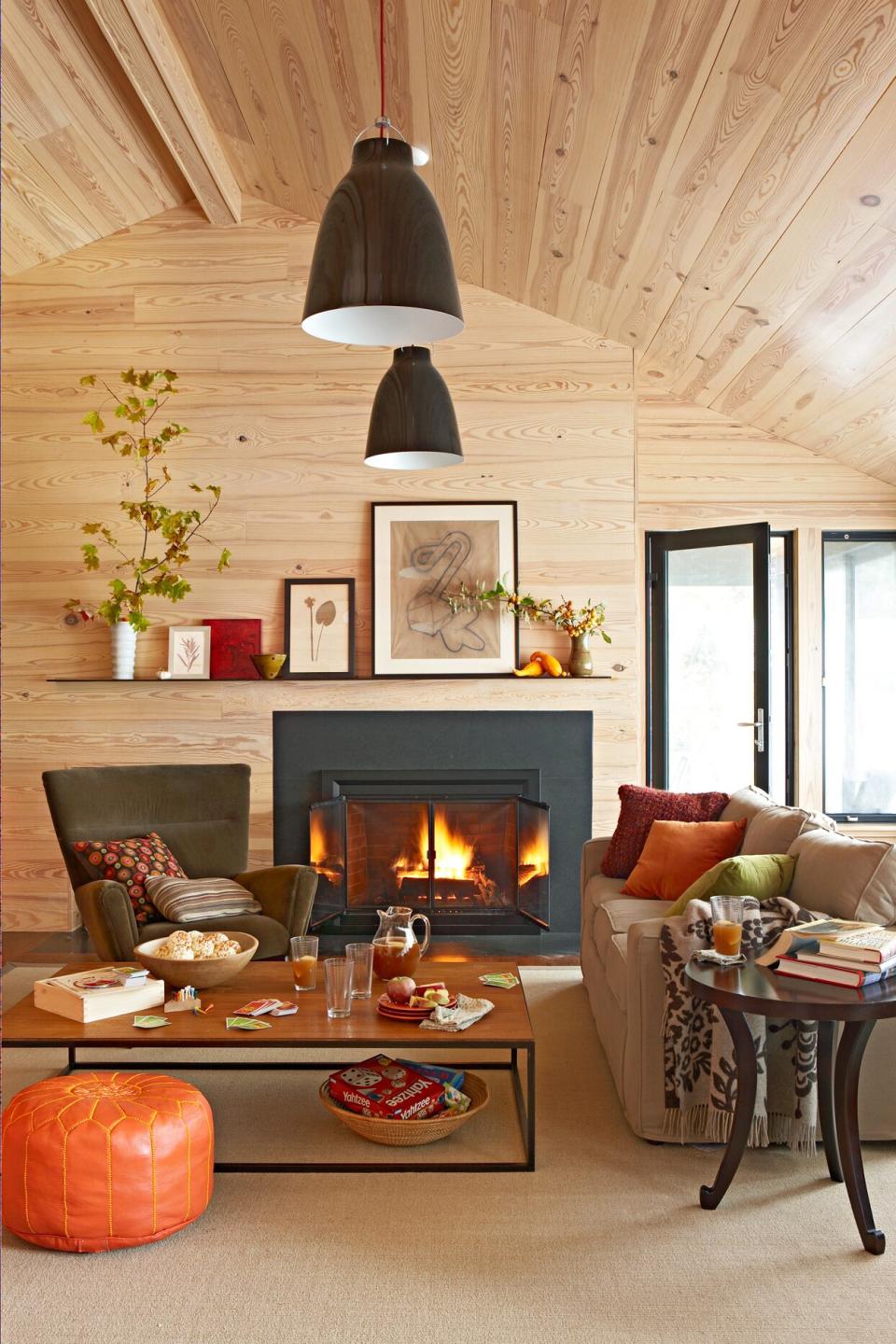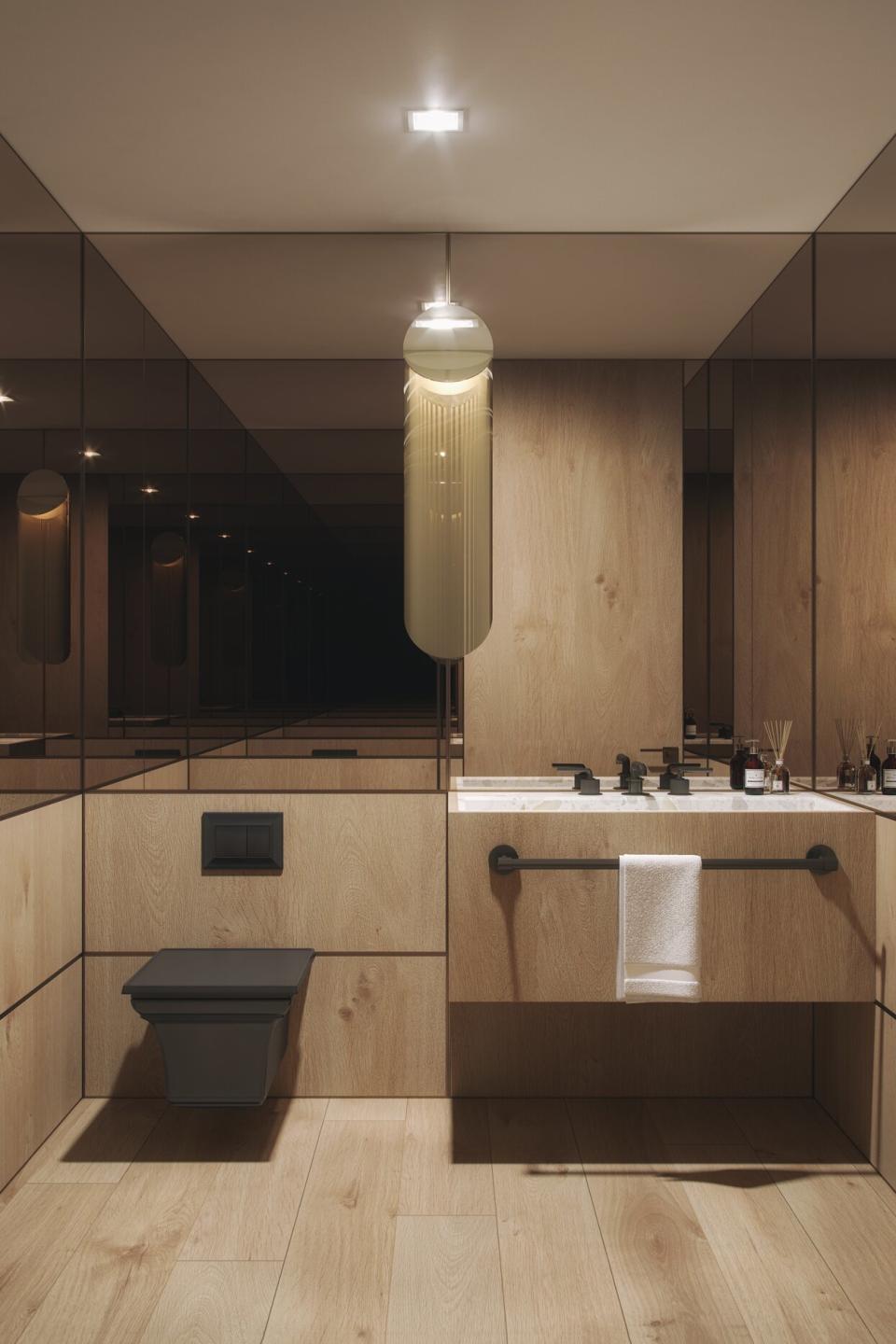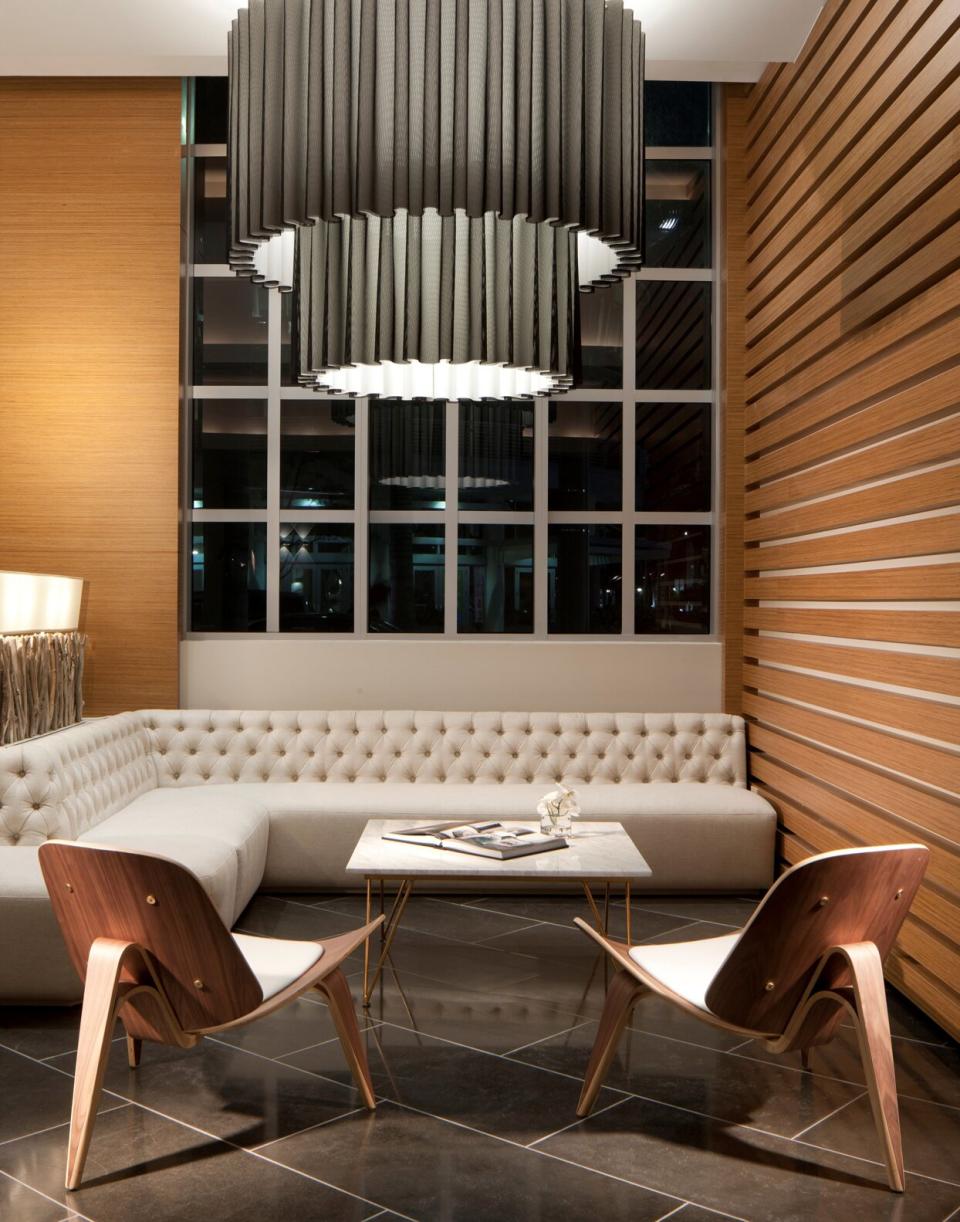Wood Paneling Is Back: How to Incorporate the Retro Look in Your Home
Whether it's grooved faux wood surrounding a shag-carpeted basement or near-seamless panels wrapping the walls and built-in cabinetry of a midcentury modern living room, wood paneling of the 1960s and '70s is an iconic design staple. For years, homeowners have wondered how to decorate around the ubiquitous design staple, often choosing to update wall paneling with paint. But if you haven't gotten around to refreshing that panel-clad sunroom—you're in luck! The look is back again thanks to a surge of interior design styles built on warm, earthy colors and textures.

Michael Partenio
"The midcentury modern aesthetic is super hot today, and people are using wood paneling again to achieve the look," says Raymond Jimenez, founder and creative director of RAYMOND NICOLAS. Add in the revival of 1970s style and the rapid rise of biophilic design, and it's no surprise that wood paneling is back in a very big way. But if the words "wood," "wall," and "paneling" give you nightmares, don't worry—today's wood panels are warmer, brighter, and more selectively placed than the basements of yore.

Raymond Nicolas
Contemporary Wood Paneling
"1960s-style den paneling has a very rich woodgrain, typically in a walnut or red oak finish, which gives it a very midcentury modern aesthetic," says Jimenez. "With that said, not many architects and designers are using the same rich tonality typical of the 1960s." Instead, today's look draws on lighter wood finishes (even some painted panels) and captures the versatility of the materials. "There are endless options in terms of wood type, the width of the panels, and the orientation of the grain," he says. But remember, this retro revamp favors natural wood tones and grains over the rustic woods and bright whites that are popular wall paneling ideas in modern farmhouse and cottage styles.
Slat wood panel walls and accents are a particularly popular interpretation this time around. Narrow, thick-cut wood strips installed vertically and spaced apart create a graphic pattern with a lot of dimension. That depth is enhanced further when pairing a light wood shade with a darker backing.
Installation is another divergence from the old style. Although a fully paneled room is a signature retro look and is still a popular choice for its warmth and nostalgic vibes, wood paneling doesn't have to be floor-to-ceiling, says Jimenez. "I love to play around with panels that go up three-quarters or even a quarter of the way up for added intrigue." The contemporary approach includes other creative alternatives such as wood paneling used to visually divide an open floor plan or accent a particular feature of a room.

Mike Butler
How to Add Wood Paneling to Your Home
Spaces today mix multiple kinds of wood, paneling types, and installations—including the red hues and varied width faux paneling of the past—for an inviting, unique, and updated design.
There are multiple ways to embrace the wall paneling trend, from individually installed wood planks to prefab MDF panels and even alternative formats like peel-and-stick boards. These products range from difficult, time-consuming, and expensive to install (hardwood tongue-and-groove plank panels, for example) to relatively quick, cheap, and easy updates like wood grain vinyl wallpaper or even a wood paneling patterned wallpaper.
Prefabricated Wood Panels
Prefabricated panels were the typical installation back in the day, and similar panel styles are still available now. These large panels are often made with wood veneer (thin layers of wood over another surface like plywood or MDF) and available as a flat panel—a smooth, single sheet that showcases good giants and tonea—or a grooved pattern that mimics individual planks like shiplap, beadboard, or slat panels. Sheet panels are typically 4x8 feet and easy to find at home improvement stores for $15-40 per 32 square feet (the price varies based on material and size).
Wood Boards
Wood boards hung individually, like tongue and groove, shiplap, or non-paneled slatted installations, usually have a heftier price tag and require more skill and effort to install. Price variations come from the type of wood and finish, from budget-friendly pine to more expensive mahogany or Brazilian hardwoods.
Applying each wood plank or strip individually requires much more precision and patience than panel sheets, especially if you're planning to cover more than an accent wall. "Unless you are incredibly handy and crafty, I absolutely would not recommend wood paneling for DIY projects. There are a lot of details that have to be finished to perfection, including nicely trimmed edges, seamless joins, and turns when the paneling meets a window, corner, fireplace, or wall unit," says Jimenez.
Check out this DIY shiplap wall video for the basics of installing wood paneling. It's a complex process, complicated further when choosing a tongue and groove style boards, or individually laying out slats. A sheet panel, like this beadboard wainscotting, will be easier. If you aren't up to DIY, just know that the more complex the installation, the more expensive it will be to have them professionally installed, too.

